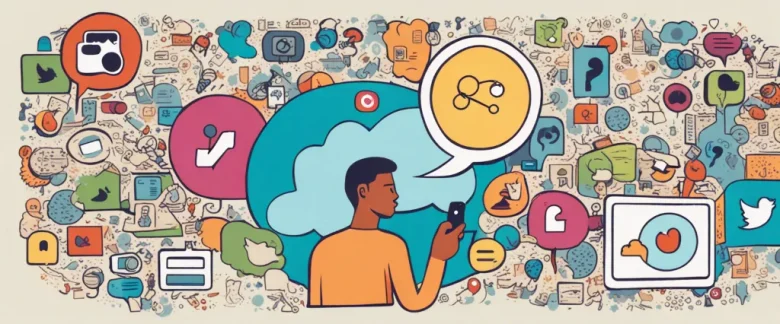In “Indistractable” by Nir Eyal, readers are invited on a thought-provoking journey to conquer the growing problem of distraction in our modern lives. With an extensive background in behavioral design and technology, Nir Eyal artfully dissects the root causes behind our inability to focus, providing practical strategies to master our attention and become indistractable. Drawing from his own personal experiences and cutting-edge research, Eyal equips readers with invaluable insights and actionable steps to reclaim control over their attention and live a more fulfilling and productive life.
Chapter 1: The Cost of Distraction
Chapter 1: The Cost of Distraction, in the book Indistractable by Nir Eyal, explores the harmful effects of distraction in our lives and how it impacts our psychology, relationships, and overall well-being. Eyal begins by emphasizing that distraction is not a new phenomenon, but the modern digital age has intensified its prevalence through constant connectivity and technological advancements.
He highlights that although external triggers like smartphones, emails, and social media contribute to distractions, the root cause lies within us — our inability to manage our impulses and attention effectively. Eyal argues that distractions act as a mechanism to cope with uncomfortable emotions and internal triggers such as stress, anxiety, boredom, and loneliness. The constant availability of distractions further perpetuates this cycle, leading to decreased productivity, decreased focus, and a diminishment of the quality of our work and personal lives.
The chapter also delves into the repercussions of distraction on our relationships. Eyal explains how constant device use hampers our ability to be present with loved ones, affecting the depth and quality of our connections. He emphasizes the importance of psychological presence and active listening as essential components for nurturing healthy relationships.
Moreover, Eyal addresses the notion of time management and the misconception that distractions are solely responsible for our lack of productivity. He asserts that time management is, in fact, emotion management, as our ability to control our internal triggers greatly influences our ability to properly allocate time to important tasks.
In conclusion, Chapter 1 examines the high cost of distractions in our lives. It emphasizes the need for individuals to take personal responsibility for managing these internal and external triggers by developing strategies to become indistractable and regain control over their attention and focus. By doing so, individuals can improve productivity, enhance relationships, and lead more fulfilling lives.
Chapter 2: Internal and External Triggers
In Chapter 2 of “Indistractable” by Nir Eyal, the focus is on understanding the internal and external triggers that drive our distraction and how we can gain control over them. Eyal argues that to become indistractable, we must identify and manage these triggers effectively.
The chapter begins by highlighting the role of internal triggers, which are emotional and psychological states that lead us to seek distractions. These triggers can be negative emotions like stress, loneliness, or boredom, and we often turn to distractions as a way to escape or numb these uncomfortable feelings. Eyal emphasizes that addressing the root cause of these emotions is essential to combating distraction effectively.
Moving on, the chapter discusses external triggers, which are sensory experiences that prompt us to take action. Eyal explains that advertisers, app designers, and others often leverage these triggers intentionally to grab our attention. Examples of external triggers include notifications on our phones, emails, or even a colleague tapping us on the shoulder. The author emphasizes the importance of recognizing these triggers and reclaiming control over them. By managing external triggers, we can prevent them from hijacking our attention and focus.
To help readers gain better control over their triggers, Eyal introduces the concept of “surfing the urge.” He suggests that instead of succumbing to the immediate impulse of distraction, we should pause, acknowledge our internal triggers, and explore healthier ways to address our discomfort. This technique allows us to become more intentional and make choices aligned with our long-term goals.
Overall, Chapter 2 of “Indistractable” emphasizes the significance of understanding internal and external triggers in our quest to become indistractable. By recognizing and managing these triggers effectively, we can regain control over our attention and focus on the important things in our lives.
Chapter 3: The Power of Focus
Chapter 3: The Power of Focus of the book “Indistractable” by Nir Eyal explores the importance of cultivating focus and the strategies to help individuals regain control over their attention. The chapter emphasizes that the ability to focus is a critical skill in a world filled with distractions.
Eyal begins by debunking the popular belief that technology is solely responsible for our lack of focus. Instead, he argues that distractions have always existed, but it is our reaction to them that determines our level of focus. He introduces the term “traction” – actions that move us towards what we desire, and “distraction” – actions that pull us away from it.
The author highlights the significance of understanding our internal triggers, which are emotions that prompt us to seek distractions. By acknowledging these triggers, we can address the root cause of our distraction and find healthier ways to cope with them. Eyal suggests that rather than suppressing these emotions or allowing them to control us, we should harness that energy to increase our focus.
To enhance focus, Eyal presents several strategies, such as setting time boundaries and establishing a schedule. Creating a dedicated time for specific tasks allows individuals to develop a routine and structure in their day, reducing the likelihood of succumbing to distractions. He also emphasizes the importance of building a fortress of solitude, a physical workspace where distractions are minimized.
Furthermore, Eyal highlights the value of using external triggers, such as notifications and reminders, to help redirect attention towards what matters most. By proactively planning our day, we can optimize our environment and take intentional steps to eliminate distractions.
Overall, Chapter 3 of “Indistractable” emphasizes the power of focus and provides practical strategies for individuals to regain control over their attention in order to lead more productive and fulfilling lives. By understanding our internal triggers, setting boundaries, and creating a focused environment, we can effectively manage distractions and stay on track towards achieving our goals.
Chapter 4: Making an Indistractable Plan

Chapter 4 of “Indistractable” by Nir Eyal focuses on creating an Indistractable plan to help individuals overcome distractions and accomplish their goals. The chapter emphasizes the importance of taking intentional steps to control our time and attention in a world full of distractions.
Eyal starts by emphasizing the need to adopt a growth mindset rather than a fixed mindset when dealing with distractions. He argues that distractions are a symptom of an underlying problem, and we can learn to address and overcome them through strategic planning.
The author introduces the four steps of making an Indistractable plan: (1) Master Internal Triggers, (2) Make Time for Traction, (3) Hack Back External Triggers, and (4) Prevent Distraction with Pacts.
The first step involves understanding the internal triggers that drive us to distraction, such as boredom, stress, or loneliness. By acknowledging and addressing these triggers, we can better control our response to them.
The second step emphasizes the importance of time management and creating a schedule that aligns with our values and goals. Eyal emphasizes the need to be specific about how we use our time, scheduling time for both work and leisure activities.
The third step focuses on external triggers, such as notifications on our devices or a noisy workspace. Eyal advises using various tactics to reduce or eliminate these triggers, such as adjusting notification settings or finding a quieter environment.
The final step encourages the use of “pre-commitments” or pacts to prevent distractions. By making commitments to ourselves and others, using techniques like implementation intentions or pre-loading our workstations with what we need, we can make it easier to stay focused on our tasks.
Ultimately, creating an Indistractable plan involves understanding our internal triggers, managing our time effectively, minimizing external triggers, and making commitments to prevent distractions. By implementing these steps, readers can gain better control over their attention and boost their overall productivity.
Chapter 5: Being Indistractable at Work
Chapter 5: Being Indistractable at Work of the book “Indistractable” by Nir Eyal emphasizes the importance of maintaining focus and avoiding distractions in the workplace. The chapter provides practical strategies and techniques to help individuals become more productive and achieve better results.
The chapter begins by highlighting the detrimental effects of constant distractions on our performance and overall well-being. It explains that distractions at work, such as emails, meetings, and colleagues interrupting our concentration, significantly hinder productivity. While some distractions are inevitable, the author emphasizes that we have control over how we respond to them.
To become indistractable at work, the author suggests several tactics. Firstly, he encourages setting daily schedules that clearly define work time and breaks. By allocating specific time slots for focused work and creating a structured routine, individuals can diminish the temptation to procrastinate or get distracted.
Another essential technique is to utilize external triggers effectively. By recognizing and controlling external triggers, like emails or notification alerts, individuals can reduce their impact on attention and productivity. Creating a distraction-free workspace, setting clear boundaries with colleagues, and using technology to limit distractions can significantly enhance concentration.
Furthermore, the chapter emphasizes the importance of managing internal triggers. Internal triggers, such as stress or boredom, can lead to seeking distractions. The author advises individuals to identify the underlying emotional triggers that cause distraction and find healthier alternatives to cope with them. Techniques like meditation, progressive relaxation, or simply identifying the source of the discomfort can help decrease internal triggers.
The chapter concludes by emphasizing the significance of open communication and collaboration with colleagues. Establishing norms and agreements regarding interruptions and distractions within a team can create a more focused and productive work environment.
In summary, Chapter 5 of “Indistractable” provides practical tips for maintaining focus and avoiding distractions at work. By implementing strategies such as creating daily schedules, managing external triggers, and addressing internal triggers, individuals can enhance their productivity and overall satisfaction in their professional lives.
Chapter 6: Indistractable in the Family
Chapter 6 of “Indistractable: How to Control Your Attention and Choose Your Life” by Nir Eyal focuses on applying the principles of becoming indistractable within the context of family life. In this chapter, Eyal explores techniques and strategies to help individuals become more present and engage meaningfully with their loved ones.
Eyal begins by emphasizing the importance of setting clear boundaries when it comes to technology usage at home. He suggests establishing specific time frames for digital device usage, creating device-free zones in the house, and encouraging open communication about the impact of technology on family connections.
The chapter also delves into the idea of “acknowledgment,” which involves recognizing and being fully present for our loved ones. Eyal advises actively listening to family members and genuinely responding with empathy and understanding when they express their needs and emotions.
Additionally, Eyal emphasizes the significance of scheduling and prioritizing quality time with family. He introduces the concept of “timeboxing,” which involves setting specific blocks of time dedicated to spending uninterrupted moments with loved ones. By treating these scheduled family activities as non-negotiable, distractions can be minimized, reinforcing the importance of family bonds.
Another vital aspect of practicing being indistractable within the family is modeling the desired behavior for children. Eyal stresses that parents need to reflect on their own device usage and be vigilant to avoid using technology as an escape mechanism or a means of avoiding family interactions. By setting a positive example, parents can inspire their children to aspire for balanced and meaningful use of technology.
In summary, Chapter 6 of “Indistractable” provides practical strategies for creating stronger connections within the family. By setting clear boundaries, practicing acknowledgement, scheduling quality time, and modeling healthy technology habits, individuals can build stronger relationships and create a more positive and fulfilling family environment.
Chapter 7: Overcoming Internal Triggers
Chapter 7 of the book “Indistractable” by Nir Eyal focuses on overcoming internal triggers as a means of increasing our ability to stay focused and avoid distractions. Internal triggers are the psychological or emotional states that prompt us to seek distractions as a way to cope with discomfort or unease.
Eyal starts by highlighting that understanding the source of one’s internal triggers is essential to overcoming them. He explains that these internal triggers typically arise from one of three main sources: boredom, uncertainty, or discomfort. Boredom occurs when we feel uninterested or uninspired, uncertainty arises when there is ambiguity or a lack of clarity, and discomfort stems from negative emotions or physical sensations.
To combat these internal triggers, Eyal suggests several strategies. One approach is to acknowledge and accept these internal triggers, instead of ignoring or avoiding them. By recognizing how these triggers manifest, we can become more aware of our response patterns and work towards finding healthier alternatives to escape distractions.
Another effective tactic is to reimagine our psychological relationship with these internal triggers. Instead of viewing boredom, uncertainty, or discomfort as negative states to be avoided, we should strive to reframe them as signals for us to take action towards our goals. For instance, boredom can be seen as an opportunity for creativity, uncertainty can be embraced as a chance for learning, and discomfort can be channelled into fuel for personal growth.
Additionally, Eyal emphasizes the importance of maintaining a healthy mental state through self-care. Proper sleep, a balanced diet, and regular exercise contribute to reducing the intensity of internal triggers. By taking care of our physical and emotional well-being, we can better equip ourselves to handle distractions effectively.
In summary, Chapter 7 of “Indistractable” provides insights into overcoming internal triggers that lead to distraction. By understanding and accepting our internal triggers, reframing their meaning, and prioritizing self-care, we can improve our ability to stay focused and achieve the goals that truly matter to us.

Chapter 8: Cultivating Indistractable Habits
In Chapter 8 of “Indistractable” by Nir Eyal, titled “Cultivating Indistractable Habits,” the author provides practical strategies to build habits that help individuals stay focused in today’s distracting world. Eyal emphasizes that the key lies in shaping your environment and mindset to minimize potential triggers and maximize your ability to stay on task.
He starts by discussing the importance of scheduling time and using timeboxing to plan your day. Timeboxing involves allotting specific time blocks for different tasks and activities, which helps prevent extra time from being wasted on unplanned distractions. Additionally, Eyal highlights the significance of implementing a pre-commitment device, such as a calendar reminder or commitment contract, to ensure adherence to your timeboxed schedule.
The author also explores tactics for making technology less distracting. One technique is called “pacts,” where individuals set device-free zones or times, creating physical barriers or constraints to reduce the temptation of engaging with distractions. Another useful tool is to modify notifications, allowing only those that provide valuable and relevant information, while muting or disabling others.
Eyal emphasizes the power of making intentions and values explicit to maintain focus and avoid distractions. He introduces the concept of becoming “indistractable,” which involves regularly reflecting on and reaffirming your values to align your actions with your goals. Utilizing various techniques like mental contrasting, identity association, and advancement mindset, individuals can better shape their habits and make choices that support their aspirations.
Ultimately, in this chapter, Eyal offers practical strategies for cultivating habits that guide individuals toward becoming indistractable. By focusing on scheduling, modifying technology usage, and staying true to one’s values, readers can empower themselves to overcome distractions and regain control of their time and attention.
After Reading
In conclusion, “Indistractable” by Nir Eyal provides readers with a valuable insight into the growing issue of distraction in our increasingly connected world. Eyal presents a comprehensive framework for understanding and conquering distraction, offering practical techniques and strategies to help individuals regain control of their attention and focus. By applying the principles of making time for traction and mastering internal triggers, readers are empowered to become more present, productive, and fulfilled in their daily lives. Ultimately, Eyal argues that by taking proactive steps to become indistractable, individuals can harness the true potential of their minds and reach their goals, rather than succumbing to the ever-present distractions that surround them.
1. Deep Work: Rules for Focused Success in a Distracted World” by Cal Newport – Similar to “Indistractable,” this book offers practical strategies and techniques to cultivate deep focus and concentration, allowing you to achieve meaningful work in an increasingly distracted world.
2. Atomic Habits: An Easy & Proven Way to Build Good Habits & Break Bad Ones” by James Clear – This book explores the power of small, consistent actions and provides actionable advice on how to build and maintain productive habits, helping you overcome distractions and achieve your goals.
3. Essentialism: The Disciplined Pursuit of Less” by Greg McKeown – In a society filled with constant demands and an overwhelming array of choices, this book offers a transformative guide to focusing on what truly matters, saying ‘no’ to distractions, and streamlining your life to maximize your efforts on the things that bring real value.
4. “Digital Minimalism: Choosing a Focused Life in a Noisy World” by Cal Newport – This book delves into the adverse effects of digital distractions and provides a practical approach to embrace a minimalist lifestyle, reclaiming your time, attention, and focus for activities that bring joy and fulfillment.
5. “Manage Your Day-to-Day: Build Your Routine, Find Your Focus, and Sharpen Your Creative Mind” by 99U – This compilation of insights from leading creative professionals shares practical advice on how to establish a daily routine, cultivate focus, and manage distractions, helping you harness your creative potential and produce meaningful work.




